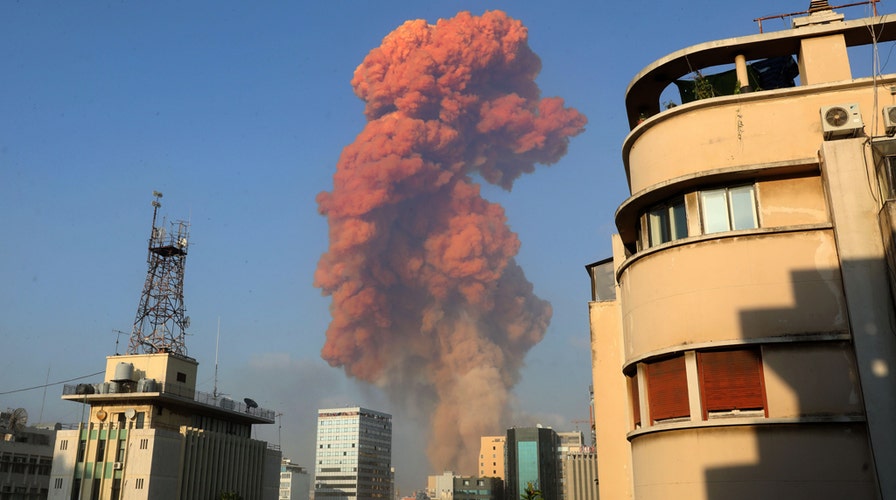Raw video: Shocking explosion rocks Beirut, Lebanon
Raw video captures the moments after a massive explosion.
The devastating explosion in Beirut that killed at least 100 people and wounded thousands hit the Lebanese capital with the force of a 3.5-magnitude earthquake.
Tuesday's blast has been linked to a stockpile of the chemical compound ammonium nitrate that had been stored in a hangar at Beirut’s port since it was confiscated from a ship in 2013. The 2,750-ton cargo is believed to have detonated after a fire broke out nearby.

A picture shows the scene of an explosion in Beirut on Aug. 4, 2020. - A large explosion rocked the Lebanese capital Beirut on August 4, an AFP correspondent said. The blast, which rattled entire buildings and broke glass, was felt in several parts of the city. (Photo by ANWAR AMRO/AFP via Getty Images)
A component of fertilizer, ammonium nitrate is potentially explosive.
“Ammonium nitrate is the ammonium salt of nitric acid. It has a role as a fertilizer, an explosive and an oxidizing agent. It is an inorganic molecular entity, an ammonium salt and an inorganic nitrate salt,” explains the National Institutes for Health on its website.
The highly flammable compound has been involved in a number of other disasters. In 2013, ammonium nitrate caused a deadly explosion at a fertilizer plant in West, Texas. The blast from the explosion of 30 tons of ammonium nitrate killed 15 people, wounded 200 and devastated the small town, according to Fox 44 News.
EXTREMELY FLAMMABLE COMPOUND IN FERTILIZER SPEAKS TO ITS DEADLY HISTORY
In 1947, a fire broke out on a ship docked at Texas City, igniting 2,300 tons of ammonium nitrate and causing an explosion that killed 600 people.
CLICK HERE TO GET THE FOX NEWS APP
Ammonium nitrate was also used in the 1995 Oklahoma City terror bombing that killed 168 people and the 2011 Oslo bombing that killed eight people.
The Associated Press contributed to this article. Follow James Rogers on Twitter @jamesjrogers

